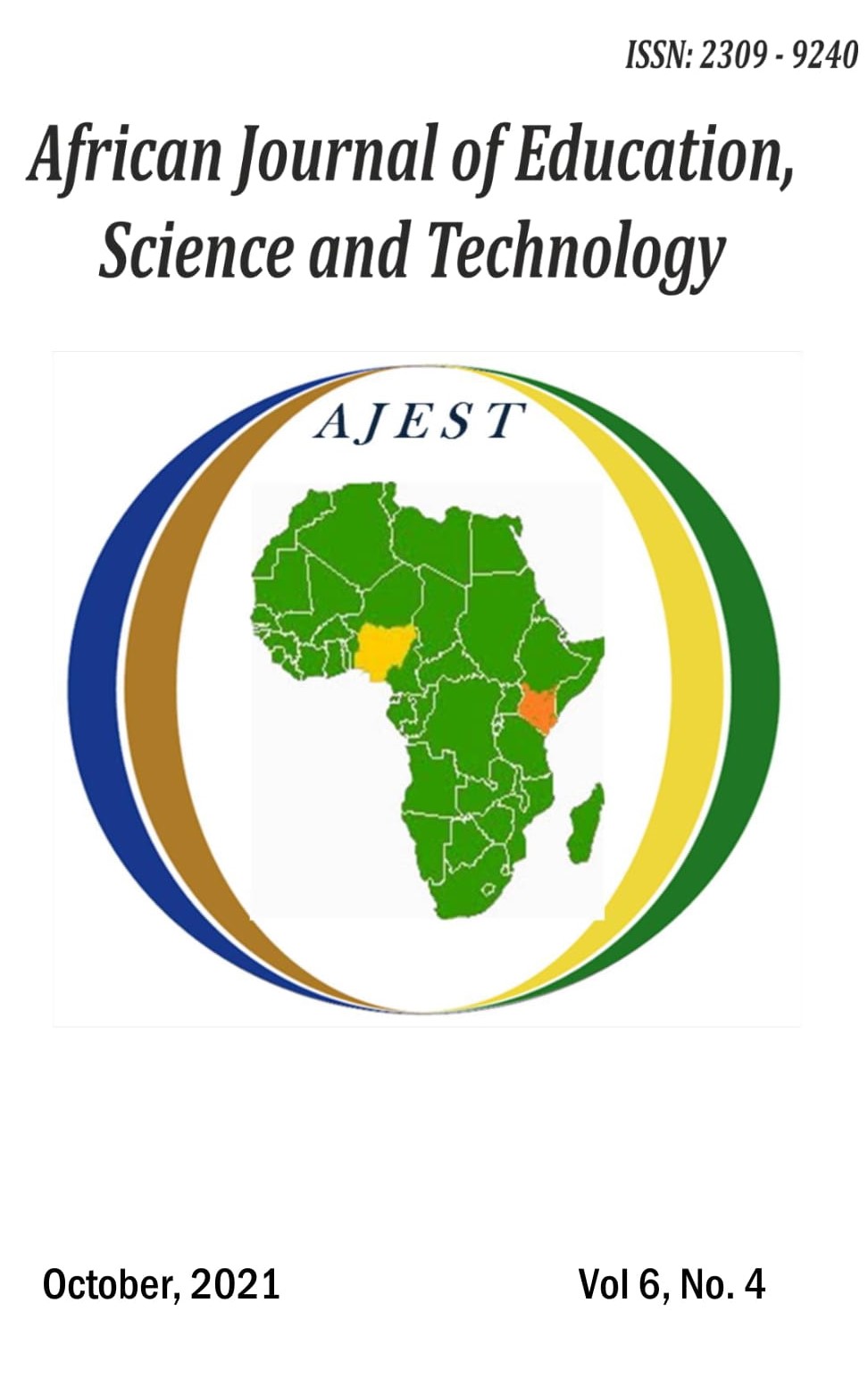A Survey on Production Practices and Utilization of Vine Spinach (Basella sp.) In Western Kenya
##article.abstract##
Vine spinach is a traditional vegetable that is highly nutritious and a source of income in Kenya. It is semi domesticated and its potential to provide much needed nutrients at the household level is therefore curtailed. Its production is also constrained by varied agronomic practices, lack of quality seed for propagation, seed dormancy as well as its mucilaginous nature when cooked. A survey was conducted to obtain indigenous information on production and consumption of vine spinach. Purposive sampling was used select 77 farmers in Kakamega and Kisii counties for interviews using a pretested structured questionnaire. Data obtained was analyzed using descriptive statistics (percentages and means) from SPSS statistical package. It was found that majority of the farmers grew green leafed vine spinach (Basella alba), used vines to establish the plants, sourced the vines from their own farms, used organic but not inorganic fertilizers, used fences as a means of trelising the plants, did not observe any pests and diseases and harvested leaf once per week. Plant spacing and cooking methods varied considerably. Information obtained forms a basis for standardizing agronomic practices, provision of quality and nutritive ways preparing vine spinach for consumption.
References
Abukutsa-Onyango M.O., 2007 a). The Diversity of Cultivated African Leafy Vegetables in Three Communities in Western Kenya African Journal of Food, Agriculture, Nutrition and Development Vol. 7 Num. 3, 2007: 1-15
Abukutsa-Onyango M.O., 2007 b. Seed Production and Support Systems for African Leafy Vegetables in Three Communities in Western Kenya. African Journal of Food, Agriculture, Nutrition and Development Vol. 7 Num. 3, 2007.
Abukutsa, M.O.O., 2010. African indigenous vegetables in Kenya: Strategic repositioning of in the horticultural sector. Jomo Kenyatta of Agriculture and Technology, Nairobi, Kenya. ISSBN 99966-923-31-4 6
Cherfas, J., 2000. HIV/AIDS Taking Major Toll on African Nutrition. In Geneflow 2000-2001 IPGRI, Rome, Italy: PP. 20 -1
Gibson R.S., Bailey, K.B., Gibbs, M. Ferguson E.L., 2010. A review of phytate, iron, zinc and calcium concentrations in plant based complementary foods used in low-income countries and implications for bioavailability. Food and Nutrition Bulletin, 31:134-46.
Grubben, G. H. J. and Denton, O. A., 2004. Plant Resources of Tropical Africa Vegetables. PROTA Foundation, Wageningen, Netherlands, Backhuys Publishers, Leiden, Netherlands/CTA, Wagenigen, Netherlands
Habwe, F.O., Walingo, K.M. and MA Onyango, 2008. Food processing and preparation technologies for sustainable utilization of African Indigenous vegetables for Nutrition security and wealth creation in Kenya. In: Robertson, G.I. and Lupien, J.R. (Eds.) Using food science and technology to improve nutrition and promote national
development, International Union of Food Science and Technology.
Kumar, S. and Pandey, A.K., 2013. Chemistry and biological activities of flavonoids: An overview. The Scientific World Journal, Vol. 2013. https://doi.org/10.1155/2013/162750.
Malishobora, 2018. Nderema, Malabar Spinach is your medicinal vegetable. www.malishobora.co.ke/nderema. Accessed 3rd December 2018.
Mwaura S.N., 2014. African Leafy Vegetables and Household Wellbeing in Kenya. A disaggregation by Gender. Current Research Journals of Social Sciences 6(4): 82-94.
Saad, N., 2000. Gender in Participatory Plant Breeding. Geneflow – Women and Plant Genetic Resources, 2000 -2001. IPGRI, Rome Italy : PP 14
Sandberg, A.S., 1991. The Effect of Food Processing on Phytate Hydrolysis and Availability of Iron and Zinc. Adv Exp Med Biol, 1991 289: 499-508.
Schippers, R. R., 2002. African Leafy Vegetables: An Overview of the Cultivated Species. Natural Resources Institute/ACP-EU Technical Centre for Agricultural and Rural Cooperation. Catham, UK.
Slowfood, 2018. Nderema. www.fondasioneslowfood.com/en/ark-of-taste-slowfood/nderema. Accessed 3rd December, 2018.
Onyango C.M. ,C.N. Kunyanga E.G. Ontita, R.D. Narla & J.W. Kimenju, 2013.Production, utilisation and indigenous knowledge of spider plant in Kenya. African Crop Science Conference Proceedings, Vol. 11. pp. 925 - 930
Price, L. 2003. Farm Women’s Rights and Roles in Wild Plant Food Gathering and Management in North-East Thailand. In: P. Howard (Ed.) Women and Plants. Zed Books Ltd, London, UK.
Ruibaihayo, J.E., Kakonge E., Kawongo, J., Hart, T. and Mugisha, J., 2002. Mechanisms for Sustainable Vegetable Production and Utilization of Indigenous Vegetables in Uganda. . In Proceedings of African Crop Science Conference Vol.2, PP. 133-135.
Walingo, A., Lungaho, C. and Shibaro, S. 2001. Market Survey of Indigenous Vegetables in Western Kenya. In Africa Crop Science Conference Proceedings Vol.5 Lagos 22-6 October 2001: PP. 665-669.


